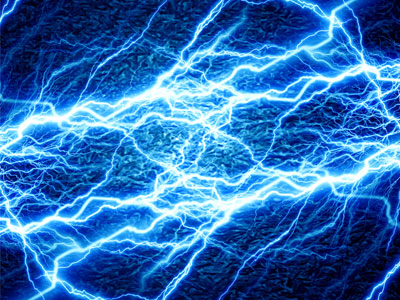How Does a Swimming Pool Salt Chlorine Generator Work in an in-ground swimming pool?
Lately, more and more homeowners have chosen to benefit from salt water swimming pools. In other words, they have adopted salt chlorine generators to their otherwise normal swimming pools. We will explain how a salt chlorine generator works and list some advantages and disadvantages it can bring to your family and your swimming pool.
Simply put, a salt chlorine generator (also known as a salt system or a salt chlorinator) is a swimming pool chlorination system that creates chlorine from sodium chloride or salt. Before a salt chlorine generator can operate, the swimming pool water must have a salt concentration of 3,000 ppm (parts per million). The water content is 99.70% water and .30% salt. It is such a small amount of salt that you should not be able to taste or smell it.
As saltwater travels through the swimming pool’s circulation system, it enters the salt chlorine generator and passes through a salt cell. As the saltwater flows through the cell, a low-voltage direct current is applied to flat, rectangular plates inside the cell, initiating electrolysis (for more information on electrolysis, please see the bottom of the post). Through electrolysis, salt and water break up into hydrogen gas and hypochlorous acid. The hydrogen gas simply leaves the swimming pool water in the form of small bubbles. The hypochlorous acid sanitizes the swimming pool water and ultimately reverts back into salt, and the process repeats.
Advantages of a Salt Water System or Salt Chlorine Generators
Salt chlorine generators offer homeowners a wide array of benefits. I always think about my customers first. By choosing to use a salt water system it’s easier on your skin and eye’s it will reduce the irritation from using harsh chemicals! By eliminating the harsh chemicals it also eliminates the odor and is also safer for the swimmers. Our customers at Blue Hawaiian Pools of Michigan love salt chlorine generators because they eliminate the need for most swimming pool chemical maintenance (which translates to lower maintenance costs). For example, at the site of electrolysis (the salt cell), chlorine is so concentrated that the swimming pool water is super chlorinated, preventing the buildup of chloramines and algae. As another example, sanitizers such as trichlor have very low pH levels (some as low as 2.8), which can significantly lower the pH of a swimming pool. Homeowners who use sanitizers with very low pH levels must use liberal amounts of sodium carbonate to offset the drop in pH. Salt chlorine generators, on the other hand, require few, if any, additional chemicals, as they produce nearly neutral pH levels.
Other advantages of salt chlorine generators include reduced skin and eye irritation, no harsh chemical odors, and swimmer safety.
Disadvantages of Salt Chlorine Generators
There are few disadvantages associated with salt chlorine generators. Perhaps the most prominent is their negative effects on swimming pool equipment but if you look at the main ingredient in chlorine you will see it’s also salt. Salt is corrosive but if maintained within the normal operating range, it’s benign. However, if allowed to increase in excess of 6,000 ppm, high salt concentrations can contribute to the breakdown of handrails, lighting systems, and swimming pool liners. Care must be taken if splash out pool water is continually pooling and evaporating, as the resulting salt concentration will increase in that area, and unless it is rinsed off, or diluted by rainfall, has to potential to create salt damage.
Other disadvantages of salt chlorine generators include The initial costs of the system and salt cell replacement.
Numerous homeowners have come to benefit from salt chlorine generators. But ultimately, you will have to decide for yourself whether their benefits outweigh the costs.
What is Electrolysis and What Role Does It Play in Salt Chlorine Generation?
Electrolysis is the process of breaking down a chemical into its components through the application of an electrical current. It is at the heart of salt chlorine generation in swimming pools, and, in this article, we explain why.
Electrolysis involves applying an electrical current to a pair of electrodes (conductors) that are immersed in a liquid solution. When the current is applied to the electrodes, several things occur: one electrode becomes negatively charged, turning into what is called a cathode; one electrode becomes positively charged, turning into what is called an anode; and the compounds found within the liquid solution separate into their respective components. When the liquid solution passes between the electrodes, the cathode attracts the positive ions in the solution, while the anode attracts the negative ions.
Electrolysis of Salt Chlorine Generation
The ruthenium oxide coating on the salt cell’s rectangular plates makes chlorine generation through electrolysis possible. The electrical charge to the coated plates creates chloride ions that combine to create chlorine gas. When this chlorine gas is introduced into the swimming pool, hypochlorous acid and hypochlorite ions (which are disinfectants) are created.
The ratio of hypochlorous acid to hypochlorite ions is dependent upon the pH level of the swimming pool water. Greater amounts of hypochlorous acid are produced at lower pH levels, while greater amounts of hypochlorite ions are produced at higher pH levels. Because hypochlorous acid is a much more effective disinfectant than are hypochlorite ions, lower pH levels are key to effective swimming pool sanitization.
Hypochlorous acid and hypochlorite ions ultimately revert back to sodium chloride and undergo the process of electrolysis again. Thus, salt chlorine generators are able to recycle the swimming pool’s disinfectants, reducing homeowners’ chemical costs in the long run.



